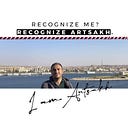The History of Rwandan Jewellery 1
Decoration is a tradition among Rwandans, where they do it to beautify their homes and places of residence, as well as to make themselves look good. Most of the Rwandan jewellery was displayed by everyone, whether it was a woman or a man, whether it was an adult or a child.
During the reign of Rudahigwa, after his father Yuhi V. Musinga, there were significant changes in royal decorations. Each part of the body had its own body parts. There were ornaments on the head, on the neck, on the body, on the feet, and on the hands, as well as cowhides.
A chain or necklace
The necklaces were made up of many pearls, which have been part of the jewellery of Rwandans since ancient times. They would cut them out of wood or metal, according to the patterns they wanted, which is why there are pearls that vary in size. There were young and old, both men and women, who were involved. They were worn around the neck, waist, and ankles.
A necklace is a string of large or medium-sized beads strung on a string. It was worn around the neck, forehead, arms, or waist. There is a type of chain called: "Keiri's chain", which is a chain made of large white and small pearls (Ikigina). It was usually worn by men. There was also a necklace made of large white and black pearls that was worn by women.
The type of chain was called: "Umutambya," which was a type of chain that consisted of pearls attached to a metal wire and tied with a grey cord.
Women, girls, and children could also wear the clothes, which were called: "Belly Clothes". Some shouted at the clothes.
The pearls were also placed on the royal crown, which was called: "Igisingo", and placed on the foreheads of the king and queen, and were found to be a beautiful decoration. The beads were also used to make the beads that were placed on the foreheads of the cattle that were going to be lit, divided, and buried.
During the clothing boom in Rwanda, during the reign of Yuhi Mazimpaka in 1642, together with politicians and Arabs, beads were the ones that bowed in abundance, as a clear sign that Rwandans knew how to sew and prepare! Then they started to create more and better colours based on Rwanda's colours of white, black, and blue.
Since then, even small children, have started to weave it in their hair, and it looks good. The beads brought by the Europeans were found to be as hot as the image of a small planet, as the ancestors of the Rwandan people had left them.
Ikirezi
One of the earliest ornaments was worn by both men and women. Both men and women still wear it on a thread and then wear it around the neck so that it goes down to the chest. Sometimes women and men wore two, so that one was on top of the other. Even though Ikirezi was still attached to the string with beads, creating a chain attached to Ikirezi.
Umudende
These ornaments were worn by men who killed seven traitors in battle and won the battle. Umudende was a special decoration for heroes who defeated the enemy in battle and killed him. The hero was wearing a long robe, he wore it everywhere, to receive his honour as he fought for Rwanda.
The umudende was a knife-like piece of metal that was worn around the neck and held in place by a bell.
Urugori
It appeared during the reign of Ruganzu Ndoli around 1510, its owner is Queen Nyirarumaga, who is known for creating many things that build the culture and history of Rwanda.
For long, "Urugori" – a traditional hair decoration worn by (new) mothers – was an identifying cultural symbol in Rwanda.
The crown was placed on the forehead at the beginning of the hair, and it was seen as an ornament that was pleasing to the eyes.
